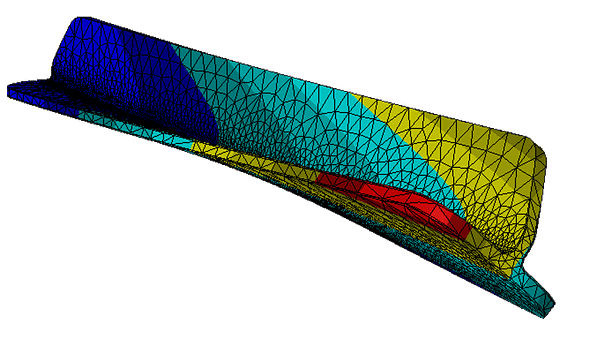Are machining-induced residual stresses causing unacceptable distortion? Need to simulate the influence of cold working sequence for a given hole pattern? Residual stresses (RS) can have a significant impact on the strength, durability and damage tolerance of metallic and composite parts. In the past, reliably simulating RS effects was challenging due to extreme stress gradients, especially in lightweight components.
Residual Stress Applications
RS effects can be beneficial, such as life extension by cold working one or more fastener holes, or detrimental, such as distortion leading to expensive re-working or rejection of large, lightweight manufactured parts. Are you in good shape?
Schedule a Residual Stress Demo
Would you like a no-cost demonstration of our residual stress and distortion prediction engineering application solutions? Complete our Request an Engineering Application Demo form and we will get back to you shortly.

Residual Stress Application Focus
The following are typical residual stress analysis applications which are routinely performed in StressCheck Professional:

Linear Elasticity Solver
Non-Linear Solver
Cold Working Solver

Linear Elasticity Solver
Bulk Residual Stress (BRS) Module
Subsurface Residual Stress (SRS) Module

Linear Elasticity Solver
Fracture Mechanics Module
MeshSim Advanced Automesher
Bulk Residual Stress (BRS) Module
Subsurface Residual Stress (SRS) Module
Would you like to schedule a Residual Stress Analysis Demo?
Would you like to learn more about our features and solutions for cold working and residual stress analysis applications? Schedule a Residual Stress Analysis demo with us by completing the below form and we’ll contact you as soon as possible. Thank you!
Looking for Resources?
Recent News & Events
Quick Links
Testimonials
-
“The addition of incremental theory of plasticity in StressCheck has greatly improved our ability to accurately predict the fatigue life of joints with interference fit fasteners and cold worked holes. This ability is especially important, not only in support of maintaining aging aircraft but also in analyzing some of the new cold working techniques that have been introduced in recent years.
Prior to this implementation, analysts often relied on closed-form approximations or simple factors that were often overly conservative and sometimes even unconservative when used in life prediction. Now, not only can we more accurately predict residual stresses in these complex structural joints, but we can also do so in a timely manner given the modeling and analysis efficiency that exists with a p-version FEA code such as StressCheck.”F-15 Structures Manager
The Boeing Company
 Serving the Numerical Simulation community since 1989
Serving the Numerical Simulation community since 1989 





